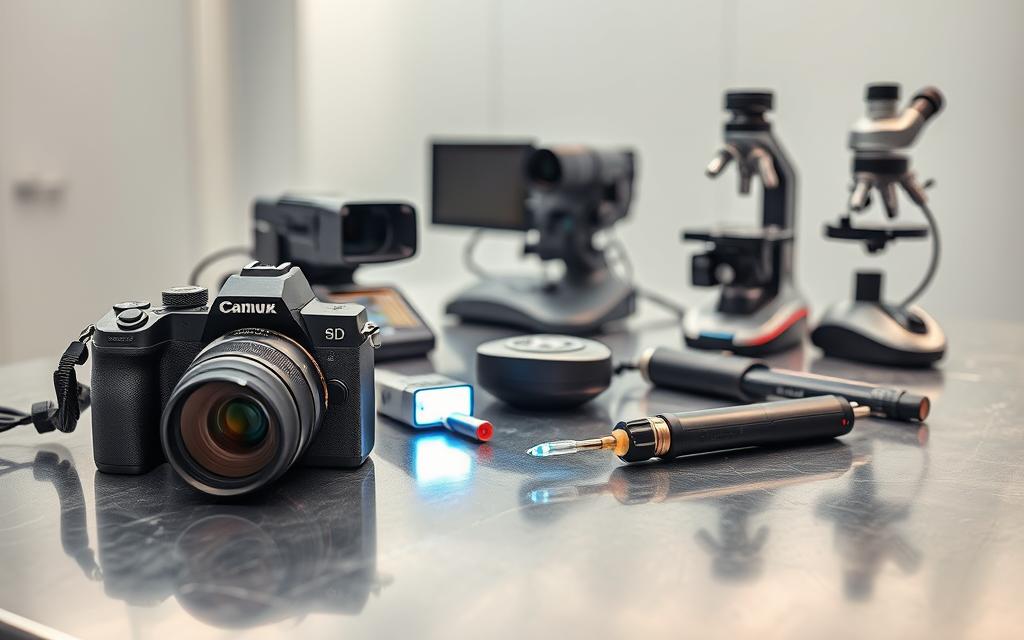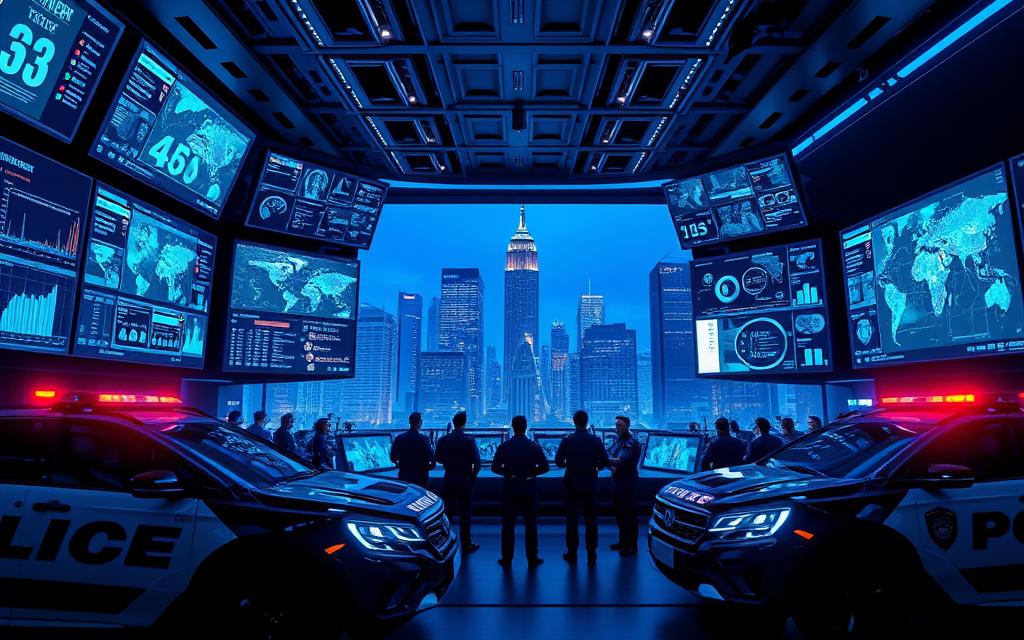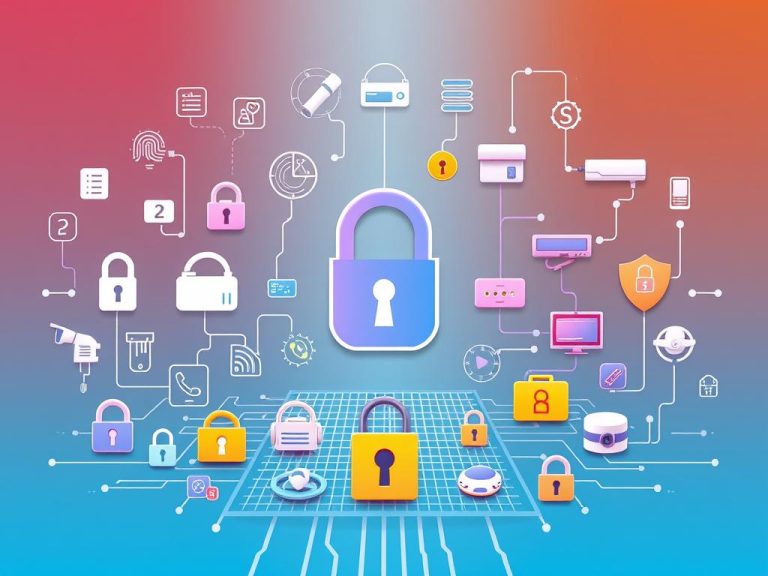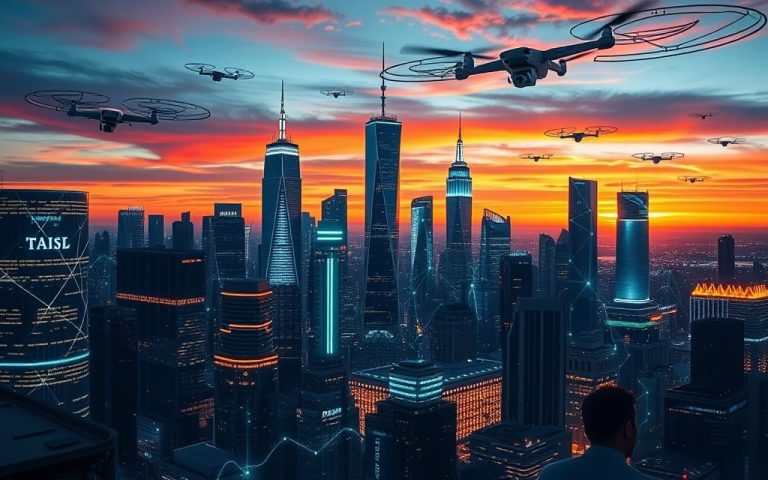How Technology is Revolutionizing Law Enforcement
Policing strategies have undergone a dramatic transformation in recent years. Advanced tools now enable agencies to shift from reactive responses to proactive crime prevention. Predictive analytics, for example, analyzes historical data to identify potential hotspots before incidents occur.
Communication systems have evolved significantly since the first police radios in 1933. Today, encrypted networks and cloud-based platforms allow seamless coordination between departments. This enhances public safety by ensuring real-time information sharing.
Modern solutions like CPI OpenFox’s software streamline operations, from background checks to database management. These innovations improve efficiency while maintaining strict security standards. The result? Faster decision-making and better resource allocation for officers on the ground.
As policing adapts to new challenges, tech-driven approaches redefine what’s possible. From command centers to patrol vehicles, every aspect of enforcement benefits from these advancements.
How Has Technology Helped Law Enforcement: An Overview
Officers today leverage advanced systems to work faster and safer. Automated case management cuts paperwork by 40%, freeing time for fieldwork. GPS-enabled tracking slashes emergency response delays by 22%, ensuring quicker aid.
Cloud computing now centralizes 85% of U.S. law enforcement databases. This allows seamless multi-jurisdictional collaboration. Evidence storage shifts to digital platforms, streamlining investigations.
Smart devices like Ring cameras supply 37% of urban crime evidence. Real-time data from these tools helps solve cases faster. Departments also save costs with software like InTime, reducing overtime expenses.
- 40% less paperwork with automated reporting
- 22% faster responses via GPS tracking
- 37% evidence boost from community cameras
These innovations transform policing into a proactive, data-driven field. The result? Safer communities and more efficient officers.
Key Technologies Transforming Policing Today
From body-worn cameras to drones, agencies adopt tech to tackle crime smarter. These tools boost transparency, speed up investigations, and keep communities safer. Below are the breakthroughs making the biggest impact.

Body-Worn Cameras and Dashcams for Transparency
78% of U.S. agencies now use body-worn cameras, with 63% reporting fewer public complaints. Smart holsters auto-activate cameras when firearms are drawn, ensuring critical moments are recorded.
| Agency Type | With Camera Mandate | Without Mandate |
|---|---|---|
| Compliance Rate | 92% | 68% |
| Complaint Reduction | 65% | 41% |
Departments like LAPD store footage in cloud-based systems. This preserves evidence while addressing storage challenges from 4K video files.
Predictive Analytics and Real-Time Crime Centers
Chicago’s police department uses algorithms to map crime hotspots. Historical data pinpoints where patrols are needed most, cutting violent incidents by 19%.
LAPD’s Real-Time Crime Center processes 12 million license plate scans daily. This helps recover stolen vehicles and track suspects within minutes.
Drones and Surveillance Systems for Enhanced Monitoring
NYPD deploys drones at 500+ high-risk events yearly. Live-streamed footage aids in hostage negotiations and wildfire tracking.
CCTV networks now integrate facial recognition databases. This speeds up suspect identification but sparks debates over privacy rights.
- Drones reduce officer risk during dangerous operations.
- Surveillance cameras deter crime in public spaces.
- ShotSpotter alerts pinpoint gunfire locations within 30 seconds.
Improving Officer Safety and Public Trust
Safety and trust now go hand-in-hand with modern policing solutions. Thermal imaging helps law enforcement personnel apprehend suspects without pursuit in 54% of cases. Biometric gun locks cut weapon thefts by 28%, protecting both officers and communities.
https://www.youtube.com/watch?v=77ISNXTJpdw
Virtual reality training reduces officer-involved shootings by 19%. Trauma-informed scenarios teach de-escalation tactics through realistic simulations. Grand Rapids PD measures trust levels using community surveys for continuous improvement.
| Camera Program Impact | With Cameras | Without Cameras |
|---|---|---|
| Public Trust Increase | 31% | 8% |
| Complaint Reduction | 65% | 41% |
| Evidence Quality | 88% approval | 62% approval |
Baltimore’s transparency portal allows review boards to access redacted footage. This builds accountability while respecting privacy. Body-worn cameras receive 93% public approval according to Pew Research.
Rural areas face challenges with live-streaming tech due to limited broadband. Mobile command units help bridge this gap during critical incidents. Nextdoor partnerships enable direct communication between residents and law enforcement personnel.
AI-powered video analytics detect threats in real-time, enhancing officer safety. These systems alert patrol units before situations escalate. When combined with body-worn cameras, they create comprehensive protection networks.
Streamlining Investigations with Advanced Forensic Tools
Cold cases are cracking open thanks to breakthroughs in investigative methods. Rapid DNA analyzers now process samples in 90 minutes—a fraction of the traditional 14-day wait. This leap forward transforms how police departments handle evidence, from backlogged labs to crime scenes.

DNA Analysis and Digital Forensics
The Golden State Killer case marked a watershed moment. Investigators used DNA analysis of public genealogy databases to identify the suspect. Genetic genealogy now solves 60+ cold cases annually, bridging gaps where fingerprints fail.
Digital footprints play an equally pivotal role. In 2023, geofence warrants using Google location data linked suspects to 12 robbery scenes. Digital forensics tools extract deleted texts or social media posts, as seen in Larry J. Thomas’s conviction.
Automated License Plate Readers and Facial Recognition
License plate readers scan 2,800 plates per minute with 99.3% accuracy. These systems flagged a stolen vehicle in Minneapolis within 8 minutes, leading to an arrest. Geofence integration expands their reach, mapping suspect movements across jurisdictions.
NCMEC’s facial recognition software identified 300+ trafficking victims last year. Yet debates simmer over privacy, especially with familial DNA searches in public databases. Agencies balance innovation with ethical guardrails.
- Palm-vein scanners outperform fingerprints in accuracy tests (0.001% error rate).
- Federal-local forensic system mismatches delay 23% of cases.
- Cloud-based evidence storage cuts retrieval time by 75%.
Challenges and Ethical Considerations
While modern tools enhance policing capabilities, they also introduce complex dilemmas. Balancing innovation with civil liberties remains a pressing issue for agencies nationwide. These challenges demand careful policy-making and transparent practices.

Privacy Concerns and Surveillance Overreach
Facial recognition systems show troubling accuracy gaps. Studies reveal error rates up to 34% higher for darker-skinned women compared to lighter-skinned men. The 2020 Detroit wrongful arrest case exposed these flaws when faulty identification led to an innocent man’s detention.
Persistent surveillance raises constitutional questions. The Supreme Court’s Carpenter v. U.S. ruling limited warrantless cell tracking but left drone monitoring standards unclear. Some cities now require community approval before deploying aerial surveillance tools.
| Surveillance Technology | Accuracy Rate | Misidentification Risk |
|---|---|---|
| Facial Recognition (General) | 92% | 8% |
| Facial Recognition (Darker Skin) | 65% | 35% |
| License Plate Readers | 99.3% | 0.7% |
Cybersecurity Risks in Law Enforcement Data
Police databases face growing digital threats. A 2023 DOJ report found 12% of agencies experienced ransomware attacks. Sensitive evidence and personal records remain vulnerable without proper safeguards.
Encryption standards like CJIS guidelines help protect body camera footage. Some departments now use blockchain to document chain-of-custody records. These measures prevent tampering while maintaining transparency.
- Data breaches expose witness information and case details
- Government devices face bans on apps like TikTok over security fears
- Cloud storage requires multi-factor authentication for access
For deeper insights on balancing innovation with rights, explore technology’s impact on policing reforms.
Conclusion
The future of policing lies in balanced innovation. With 89% of agencies boosting tech budgets, tools like body cameras and predictive analytics redefine public safety. Yet, ethical safeguards remain crucial.
Standardized audits for algorithms and NIST-certified redaction tools ensure transparency. Officer training must keep pace with advancements to maximize effectiveness. Partnerships can bridge gaps for rural communities lacking resources.
As the law enforcement tech market grows to $12B by 2027, responsible adoption is key. Prioritizing both efficiency and civil liberties will build trust while keeping public safety at the forefront.
FAQ
What role do body-worn cameras play in modern policing?
Body-worn cameras increase transparency by recording interactions between officers and the public. They provide crucial evidence, improve accountability, and help resolve disputes.
How do predictive analytics assist in crime prevention?
Predictive analytics uses data to identify crime trends and hotspots. This allows departments to allocate resources efficiently and prevent incidents before they occur.
Are drones commonly used by law enforcement agencies?
Yes, drones provide aerial surveillance for search-and-rescue missions, traffic monitoring, and large-scale events. They enhance situational awareness while reducing risks to officers.
What are the benefits of real-time crime centers?
These centers analyze live data from cameras, sensors, and social media. Officers receive instant updates, improving response times and coordination during emergencies.
How does facial recognition support investigations?
Facial recognition software scans databases to identify suspects quickly. It aids in locating missing persons and tracking down criminals with greater accuracy.
What ethical concerns arise from surveillance technologies?
Privacy issues, data misuse, and potential biases in algorithms are major concerns. Balancing security with civil liberties remains a key challenge for agencies.
Can digital forensics help solve cybercrimes?
Absolutely. Digital forensics recovers deleted files, tracks online activity, and uncovers digital evidence. It plays a vital role in prosecuting cybercriminals.
How do automated license plate readers improve traffic enforcement?
These systems scan plates to flag stolen vehicles or expired registrations. They enhance road safety and assist in locating suspects involved in crimes.















